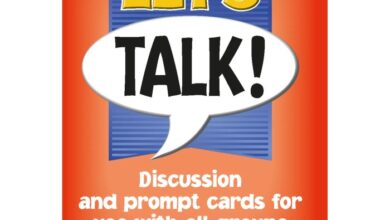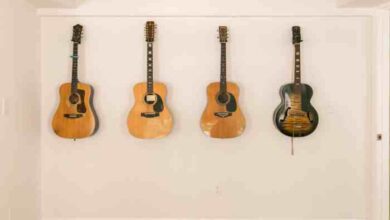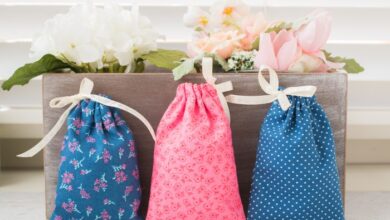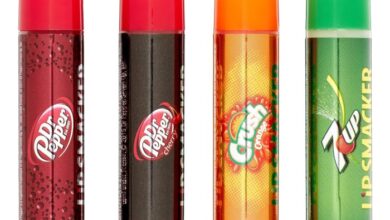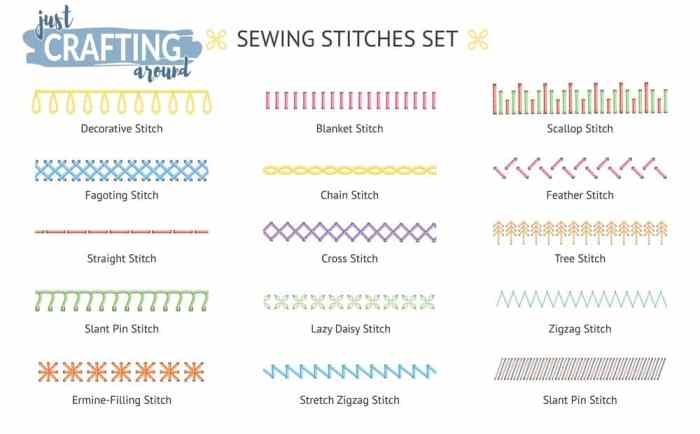
Sewing lessons basic stitches – Sewing Lessons: Basic Stitches for Beginners – Embark on a journey of creativity and self-sufficiency by mastering the fundamental stitches that form the foundation of any sewing project. From the simple running stitch to the intricate blanket stitch, this guide will equip you with the essential skills to create beautiful and functional garments, home decor, and more.
Whether you’re a complete novice or have some sewing experience, understanding these basic stitches will unlock a world of possibilities. Imagine crafting personalized gifts, repairing clothes, or even designing your own unique fashion pieces. The journey begins with a needle, thread, and a willingness to learn.
Let’s dive into the world of sewing together!
Introduction to Sewing: Sewing Lessons Basic Stitches
Sewing is a fundamental craft that has been practiced for centuries, playing a vital role in shaping our lives and cultures. It involves using a needle and thread to join fabric pieces, creating garments, home decor, and countless other items.
Sewing is a versatile and rewarding skill, offering endless possibilities for creativity and self-expression.
Types of Sewing Projects
Sewing projects span a vast range of complexity and purpose.
- Clothing:Sewing clothes allows you to create unique garments tailored to your style and fit. From simple t-shirts and dresses to intricate suits and coats, the possibilities are endless.
- Home Decor:Sewing can transform your living spaces with custom curtains, bed linens, cushions, and tablecloths. You can personalize your home with unique designs and fabrics.
- Accessories:From bags and purses to hats and scarves, sewing allows you to create stylish accessories that complement your wardrobe and personality.
- Repairs and Alterations:Sewing is essential for mending clothes, altering garments, and restoring old items to their former glory. It helps you save money and extend the lifespan of your belongings.
- Quilting and Patchwork:These traditional crafts involve stitching together fabric squares or pieces to create beautiful and intricate quilts. They are often passed down through generations, representing family history and craftsmanship.
Benefits of Learning Basic Sewing Stitches
Learning basic sewing stitches is a valuable skill that can be applied to a wide range of projects.
- Creativity and Self-Expression:Sewing allows you to express your creativity through fabric, color, and design. You can create unique and personalized items that reflect your style and personality.
- Cost Savings:Sewing can save you money by allowing you to create your own clothes, home decor, and accessories. You can also repair and alter existing items, extending their lifespan.
- Problem-Solving and Resourcefulness:Sewing involves problem-solving and resourcefulness. You learn to adapt to different fabrics and situations, developing your skills and confidence.
- Relaxation and Mindfulness:Sewing can be a relaxing and mindful activity. The repetitive motions and focus on detail can be calming and therapeutic.
- Sense of Accomplishment:Completing a sewing project provides a sense of accomplishment and satisfaction. You have created something with your own hands, and you can be proud of your work.
Essential Sewing Tools and Supplies
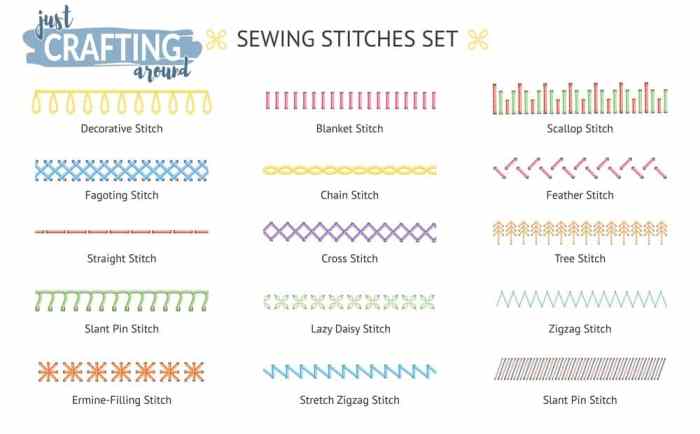
A well-equipped sewing kit is essential for any aspiring seamstress. It allows you to tackle a wide range of projects, from simple repairs to complex garments. This section will guide you through the essential tools and supplies you need to get started with your sewing journey.
Essential Sewing Tools and Supplies
The tools and supplies you need for sewing can be categorized into basic and specialized tools. Let’s explore each category:
| Tool | Function |
|---|---|
| Sewing Machine | The heart of any sewing project, this machine stitches fabric together efficiently. Choose a machine with features that suit your skill level and project needs. |
| Scissors | Essential for cutting fabric accurately. Invest in a pair of sharp fabric shears for precise cuts. |
| Measuring Tape | Used to measure fabric and body measurements accurately. |
| Pins | Used to hold fabric pieces together temporarily while sewing. |
| Needle Threader | A handy tool for threading needles easily. |
| Sewing Needles | Used for hand sewing and for threading into the sewing machine. |
| Thread | The material used to stitch fabric together. Choose thread that complements the fabric in color and weight. |
| Seam Ripper | A tool used to remove stitches when needed. |
| Iron | Used to press seams and fabric, giving your projects a polished finish. |
| Ironing Board | A flat surface used for ironing. |
Importance of High-Quality Materials and Tools
Using high-quality materials and tools is crucial for successful sewing projects. High-quality fabric, for instance, will last longer and look better. Similarly, sharp scissors and needles make precise cuts and stitching easier, leading to better results. Investing in quality tools can save you time and frustration in the long run, making your sewing experience more enjoyable.
Basic Sewing Stitches
Mastering basic sewing stitches is fundamental to any sewing project, whether you’re a beginner or an experienced sewist. These stitches form the foundation of your sewing journey, enabling you to create a wide range of garments, home décor, and crafts.
Running Stitch
The running stitch is a simple and versatile stitch, ideal for basting and temporary stitching. It is characterized by its long, even stitches that create a straight line.
- Purpose:The running stitch is primarily used for basting, which is a temporary stitching technique used to hold fabric pieces together before permanent stitching. It is also useful for gathering fabric, creating a decorative stitch, or securing seams.
- Technique:To execute a running stitch, thread your needle and make a small knot at the end. Insert the needle through the fabric from the bottom to the top, leaving a small loop of thread on the underside. Bring the needle up through the fabric a short distance away, creating a stitch.
Repeat this process, maintaining consistent stitch lengths, until you reach the desired length. To finish the stitch, tie a knot on the underside of the fabric.
Back Stitch
The back stitch is a strong and durable stitch often used for seams that need to withstand stress and strain. It is similar to the running stitch, but with an added step that creates a more secure stitch.
- Purpose:The back stitch is perfect for seams that require strength, such as on trousers, shirts, and other garments. It is also used for attaching buttonholes and creating a decorative stitch.
- Technique:To execute a back stitch, thread your needle and make a small knot at the end. Insert the needle through the fabric from the bottom to the top, leaving a small loop of thread on the underside. Bring the needle up through the fabric a short distance away, creating a stitch.
Then, insert the needle back down through the fabric, directly behind the first stitch, and bring it up again through the fabric a short distance away, creating a second stitch. Repeat this process, sewing backward over the previous stitch, until you reach the desired length.
To finish the stitch, tie a knot on the underside of the fabric.
Slip Stitch
The slip stitch is an almost invisible stitch used for creating seamless and professional-looking seams. It is ideal for concealing seams and creating a smooth, flat finish.
Learning basic stitches in sewing is like building a foundation for more complex projects. Once you master the basics, you can create all sorts of amazing things, like a personalized home welcome mat! Personalized home welcome mats are a great way to add a touch of personality to your entryway, and they’re surprisingly easy to sew with a little practice.
Once you’ve got the hang of basic stitches, you can even try adding embellishments or embroidery to your welcome mat for a truly unique piece.
- Purpose:The slip stitch is perfect for finishing seams on garments, especially those with delicate fabrics or exposed seams. It is also used for attaching linings and creating a decorative stitch.
- Technique:To execute a slip stitch, thread your needle and make a small knot at the end. Insert the needle through the fabric from the bottom to the top, leaving a small loop of thread on the underside. Bring the needle up through the fabric a short distance away, creating a stitch.
Then, insert the needle back down through the fabric, directly behind the first stitch, and bring it up through the fabric a short distance away, creating a second stitch. Repeat this process, sewing backward over the previous stitch, until you reach the desired length.
To finish the stitch, tie a knot on the underside of the fabric.
Blanket Stitch
The blanket stitch is a decorative stitch that creates a neat and secure edge on blankets, quilts, and other fabric projects. It is a versatile stitch that can be used to finish edges, create decorative accents, and add a touch of elegance to your sewing projects.
- Purpose:The blanket stitch is perfect for finishing edges on blankets, quilts, and other fabric projects. It is also used to create decorative accents and add a touch of elegance to your sewing projects.
- Technique:To execute a blanket stitch, thread your needle and make a small knot at the end. Insert the needle through the fabric from the bottom to the top, leaving a small loop of thread on the underside. Bring the needle up through the fabric a short distance away, creating a stitch.
Then, insert the needle back down through the fabric, directly behind the first stitch, and bring it up through the fabric a short distance away, creating a second stitch. Repeat this process, sewing backward over the previous stitch, until you reach the desired length.
To finish the stitch, tie a knot on the underside of the fabric.
Whip Stitch, Sewing lessons basic stitches
The whip stitch is a simple and versatile stitch that is commonly used for attaching two pieces of fabric together. It is also known as the overcasting stitch and is a great choice for securing raw edges and preventing fraying.
- Purpose:The whip stitch is perfect for attaching two pieces of fabric together, securing raw edges, and preventing fraying. It is also used for creating decorative stitches and adding a touch of detail to your projects.
- Technique:To execute a whip stitch, thread your needle and make a small knot at the end. Insert the needle through the fabric from the bottom to the top, leaving a small loop of thread on the underside. Bring the needle up through the fabric a short distance away, creating a stitch.
Then, insert the needle back down through the fabric, directly behind the first stitch, and bring it up through the fabric a short distance away, creating a second stitch. Repeat this process, sewing backward over the previous stitch, until you reach the desired length.
To finish the stitch, tie a knot on the underside of the fabric.
Sewing Techniques for Beginners
Now that you’ve learned about the basic sewing stitches, let’s dive into some practical techniques that will help you confidently tackle your first sewing projects.
Threading a Needle and Tying a Knot
Threading a needle and tying a knot are fundamental skills in sewing. It’s a simple process, but mastering it is essential for creating strong and secure seams.Here’s a step-by-step guide:
- Hold the needlebetween your thumb and forefinger, with the eye facing upwards.
- Thread the needleby gently pulling the thread through the eye. You can use a needle threader for easier threading.
- Once the thread is through, leave a tail of about 6 inches.
- To tie a knot, fold the thread in half and hold the loop with your thumb and forefinger.
- Wrap the threadaround the loop twice, then pull the thread through the loop to form a knot.
- Tighten the knotby pulling on both ends of the thread.
Using a Sewing Machine
Sewing machines are powerful tools that can make sewing faster and easier. Learning to use one effectively will enhance your sewing experience.Here are some key steps to follow:
1. Prepare your machine
Ensure the sewing machine is plugged in and the foot is raised.
2. Thread the machine
Follow the manufacturer’s instructions for threading the upper and lower threads.
3. Select the stitch
Choose the appropriate stitch for your project. Refer to your machine’s manual for different stitch options.
4. Adjust the stitch length
Adjust the stitch length based on the fabric and project requirements.
5. Adjust the tension
The tension controls how tightly the thread is pulled, affecting the stitch quality.
6. Practice on a scrap fabric
Before sewing on your actual project, practice on a scrap fabric to get a feel for the machine and stitch settings.
Choosing the Right Fabric and Thread
Selecting the right fabric and thread is crucial for achieving successful sewing outcomes. Different fabrics have varying properties, and thread types affect the stitch appearance and durability.Here are some factors to consider:
1. Project requirements
Determine the purpose of the project, such as clothing, home decor, or accessories.
2. Fabric type
Choose a fabric suitable for the project, considering factors like weight, drape, and texture.
3. Thread type
Select a thread that complements the fabric and provides the desired stitch appearance and strength.
Learning basic stitches in sewing is a great way to build a foundation for more complex projects. It’s all about understanding the fundamentals, just like when you’re figuring out if you need to patch a vulnerability like the spring4shell vulnerability.
Once you’ve mastered the basics, you can move on to more intricate techniques and create beautiful, personalized garments.
4. Thread weight
Match the thread weight to the fabric weight for optimal stitching.
Proper Fabric Preparation
Preparing fabric before sewing is essential for achieving a smooth and professional finish. Pre-washing and pressing help prevent shrinkage, wrinkles, and fabric distortion.
1. Pre-washing
Wash the fabric according to the care instructions to prevent shrinkage and color bleeding.
2. Pressing
Iron the fabric with a hot iron to remove wrinkles and ensure a smooth surface for sewing.
Mastering basic stitches like the running stitch and backstitch is a great starting point for any sewing project, even if you’re crafting something as intricate as a miniature holiday-themed book nook. You can find inspiration for these adorable creations on websites like holiday themed book nook , and use your sewing skills to bring your own unique holiday scenes to life.
3. Cutting
After pressing, cut the fabric accurately using sharp scissors or a rotary cutter.
Practical Applications of Basic Stitches
Now that you’ve mastered the basics of sewing, let’s put those skills to practical use! We’ll explore how to create various essential sewing projects using the fundamental stitches you’ve learned.
Sewing a Buttonhole with the Back Stitch
The back stitch is perfect for creating strong and secure buttonholes. It creates a tight, durable seam that prevents unraveling. To sew a buttonhole, you’ll need a needle, thread, and a fabric marking tool. Follow these steps:
- Mark the desired length and width of the buttonhole on your fabric using a fabric marking tool.
- Start sewing at one end of the marked line, using the back stitch. Sew along the marked line, keeping the stitches close together and even.
- When you reach the other end of the marked line, turn the fabric around and sew back along the same line, overlapping the stitches slightly.
- Continue sewing back and forth until the buttonhole is the desired depth. Secure the thread at the end of the stitching.
- Cut a small slit in the center of the buttonhole, being careful not to cut through the stitching.
Attaching a Button with the Blanket Stitch
The blanket stitch is a decorative stitch often used to create a neat and secure edge around fabric. It’s also ideal for attaching buttons. To attach a button, you’ll need a needle, thread, a button, and a fabric marking tool.
Follow these steps:
- Mark the desired location for the button on your fabric using a fabric marking tool.
- Thread your needle and tie a knot at the end of the thread.
- Bring the needle up through the fabric at the marked location.
- Wrap the thread around the needle, creating a loop. Pull the needle through the loop, forming the blanket stitch.
- Repeat steps 3 and 4, creating a series of blanket stitches around the buttonhole.
- Once you’ve completed the circle, secure the thread by tying a knot on the underside of the fabric.
Sewing a Straight Seam with the Running Stitch
The running stitch is a quick and easy stitch that’s perfect for sewing straight seams. It’s ideal for projects where strength isn’t a primary concern.To sew a straight seam, you’ll need a needle, thread, and two pieces of fabric.
Follow these steps:
- Pin the two pieces of fabric together, right sides facing.
- Thread your needle and tie a knot at the end of the thread.
- Start sewing at one end of the seam, making small, even stitches through both layers of fabric.
- Continue sewing along the seam, keeping the stitches the same distance apart.
- When you reach the end of the seam, secure the thread by tying a knot on the underside of the fabric.
Sewing Curved Seams with the Slip Stitch
The slip stitch is an almost invisible stitch that’s perfect for sewing curved seams, hems, and other areas where you want a clean, finished look. To sew a curved seam with the slip stitch, you’ll need a needle, thread, and two pieces of fabric.
Follow these steps:
- Pin the two pieces of fabric together, right sides facing.
- Thread your needle and tie a knot at the end of the thread.
- Start sewing at one end of the seam, bringing the needle up through the fabric on the underside of the seam.
- Slip the needle under the next stitch on the top side of the seam and pull the thread through.
- Repeat steps 3 and 4, keeping the stitches close together and even.
- When you reach the end of the seam, secure the thread by tying a knot on the underside of the fabric.
Sewing a Hem with the Whip Stitch
The whip stitch is a strong and secure stitch that’s perfect for sewing hems. It creates a neat and finished edge that prevents fraying. To sew a hem with the whip stitch, you’ll need a needle, thread, and a piece of fabric.
Follow these steps:
- Fold the edge of the fabric to the desired hem width and press it flat.
- Thread your needle and tie a knot at the end of the thread.
- Start sewing at one end of the hem, bringing the needle up through the folded edge of the fabric.
- Wrap the thread around the needle, creating a loop.
- Pull the needle through the loop, forming the whip stitch.
- Repeat steps 3 and 4, creating a series of whip stitches along the hem.
- When you reach the end of the hem, secure the thread by tying a knot on the underside of the fabric.
Advanced Sewing Techniques
Now that you’ve mastered the basics, let’s delve into some more advanced sewing techniques that will elevate your projects to the next level. These techniques will equip you with the skills to work with different fabrics, interpret patterns, and create professional-looking finishes.
Working with Different Fabrics
Different fabrics have unique characteristics that require specific sewing techniques. Understanding these characteristics will help you choose the right needle, thread, and stitch settings for each fabric.
- Knit Fabrics:Knits are stretchy and prone to fraying. Use a ballpoint needle to prevent snags and a zigzag stitch to secure seams. Use a serger or a zig-zag stitch to finish raw edges to prevent them from curling.
- Silk Fabrics:Silk is a delicate and luxurious fabric. Use a sharp needle and a fine thread to prevent snags and tears. Use a slip stitch or a French seam to finish seams for a clean and invisible finish.
- Woven Fabrics:Woven fabrics are more stable than knits and can be sewn with a variety of stitches. Use a universal needle and a thread that matches the fabric’s weight. Use a serger or a zig-zag stitch to finish raw edges.
Understanding Sewing Patterns
Sewing patterns are essential for creating garments and other sewing projects. They provide detailed instructions and measurements to guide you through the process.
- Pattern Symbols:Familiarize yourself with the symbols used on sewing patterns, which indicate different stitches, markings, and seam allowances.
- Pattern Layout:Lay out the pattern pieces on the fabric according to the pattern instructions, ensuring that you have enough fabric and that the grain lines are aligned.
- Pattern Instructions:Carefully read the pattern instructions before you begin sewing. They will provide step-by-step guidance on how to cut, sew, and finish your project.
Professional Finishes
Professional-looking finishes are essential for creating high-quality sewing projects. Here are some techniques to achieve that polished look:
- Pressing:Pressing is crucial for shaping and smoothing seams and fabric. Use a pressing cloth to protect delicate fabrics and press seams open to create a flat, clean finish.
- Seam Finishes:Finishing seams prevents fraying and creates a professional look. Use a serger, a zig-zag stitch, or a bound seam to finish raw edges.
Adding Embellishments
Embellishments can add a touch of personality and style to your sewing projects.
- Embroidery:Embroidery involves stitching designs onto fabric using a needle and thread. You can use a variety of stitches to create intricate patterns and embellishments.
- Appliqué:Appliqué involves attaching fabric shapes to a base fabric. You can use a variety of techniques to create appliqué designs, such as hand-stitching, machine-stitching, or using fusible webbing.
Safety Precautions and Tips
Sewing, like any craft, requires safety measures to prevent accidents and injuries. This section covers important safety precautions and tips to ensure a safe and enjoyable sewing experience.
Sewing Machine Safety
It’s crucial to understand and follow safety guidelines when using a sewing machine.
- Always unplug the sewing machine before cleaning, oiling, or making any adjustments. This prevents accidental shocks.
- Keep fingers and hands away from the needle and presser foot area while the machine is running. The needle is sharp and can cause serious injuries.
- Use the sewing machine’s safety features, such as the needle guard and the foot pedal, to prevent accidents. The needle guard protects your fingers from the needle, while the foot pedal provides controlled speed and prevents sudden movements.
- Avoid wearing loose clothing or jewelry near the sewing machine. Loose clothing or jewelry can get caught in the machine, causing injury or damage.
- Keep the sewing machine area clean and free of clutter. A clean workspace reduces the risk of tripping or falling, which can lead to accidents.
Common Sewing Mistakes and Troubleshooting
Sewing can be challenging, and it’s common to make mistakes. Here are some common mistakes and troubleshooting tips to help you avoid them.
- Skipped Stitches:This can occur due to a dull needle, improper thread tension, or a clogged bobbin case. Replace the needle, adjust the tension, and clean the bobbin case to resolve this issue.
- Broken Needles:Broken needles can happen due to hitting pins or other objects, using the wrong needle size, or forcing the fabric through the machine. Use the correct needle size for your fabric, avoid hitting pins, and don’t force the fabric.
- Uneven Stitches:Uneven stitches can result from improper thread tension, incorrect needle size, or a worn-out sewing machine. Adjust the thread tension, use the appropriate needle size, and consider having your sewing machine serviced if it’s worn out.
- Fabric Puckering:Fabric puckering occurs when the fabric is pulled too tightly during sewing. Use a walking foot or a special stitch to prevent puckering.
- Fabric Fraying:Fabric fraying can happen when the fabric is cut with sharp scissors or when the edges are not finished properly. Use sharp scissors and finish the edges of the fabric with a serger or zigzag stitch.
Importance of Practice and Skill Development
Sewing is a skill that requires practice and patience. Don’t be discouraged if you make mistakes or if your first projects aren’t perfect. With practice, you’ll improve your skills and create beautiful projects.
- Start with simple projects and gradually work your way up to more complex ones. This allows you to learn basic techniques and build confidence.
- Take your time and don’t rush. Rushing can lead to mistakes and frustration. Focus on accuracy and quality over speed.
- Don’t be afraid to experiment and try new things. Experimentation is essential for learning and developing new skills. Try different fabrics, stitches, and techniques to see what works best for you.
Benefits of Joining a Sewing Group or Taking a Sewing Class
Joining a sewing group or taking a sewing class can be beneficial for beginners and experienced sewers alike.
- Learning from Others:Sewing groups and classes provide opportunities to learn from experienced sewers and share tips and techniques.
- Inspiration and Motivation:Being surrounded by other sewers can be inspiring and motivating. You’ll see what others are creating and be inspired to try new things.
- Support and Feedback:Sewing groups and classes provide a supportive environment where you can get feedback on your work and ask for help when needed.
- Access to Resources:Sewing groups and classes often have access to resources such as sewing machines, fabrics, and patterns.

